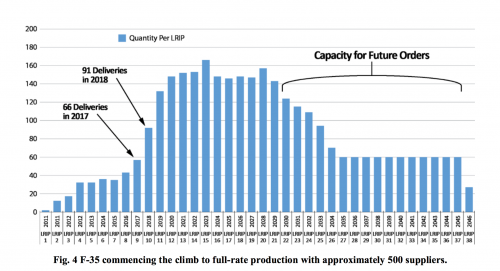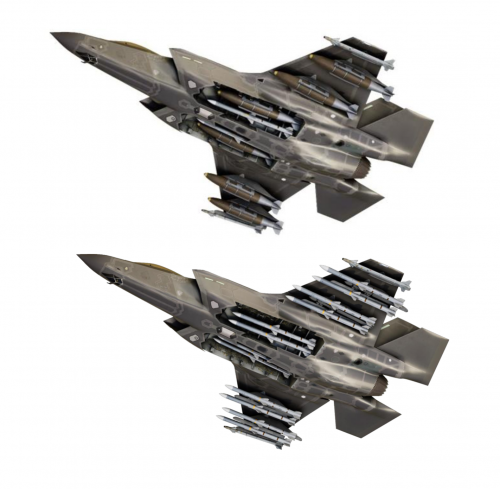bring_it_on said:
NeilChapman said:
Yes. The point is the same. No one saw it coming.
As I said, it was a fling. But the world changes quickly and what was absurd a few years ago is now reality.
There is simply no basis for any reasonable argument to be made that a nation that buys western fighters and has money to invest into a $100+ Million fighter would voluntarily chose to go and buy the JF-17 or the J-10 for that matter even though the latter has not been exported as of yet. There is no heavy fighter in this class and capability that is exported by China and there is unlikely to be for quite some time.
Look, I am not against the move but am merely trying to understand justifications for the OSD stepping in (if the reports are to be believed) which is not the best way for the services to allocate money since even at times of extra funding the services always have an unfunded priorities wish list and all of those priorities are formulated by following an analytical process as opposed to a top down directive to buy X but not Y. So far Industrial Base health is the most compelling argument that I have heard in favor of this deal when weighing in other modernization priorities and alternatives.
Arjen said:
When will PCA fly? Modern combat aircraft take decades from inception to operational status, what should be flown before PCA arrives? If PCA is not replaced by more 'transformational' weaponry that will take even longer to appear? Time will expire on the F-15s, replacements will be needed. Better make realistic plans.
PCA is a 2030's capability and the USAF is fairly confident in the F-15C's being OK to serve the Guard and the few Active AF squadrons till late 2020s or 2030. The budget for the broader NGAD effort has been considerably increased and is now at something like $10 Billion over the FYDP not counting the propulsion contracts. This is a lot of money and probably the fastest they can go at this stage. I think the idea with the PCA and NGAD efforts of the USAF and USN is to avoid the 15+ year developmental cycles of the F-22/F-35 so those protracted developmental programs are likely not an option. That said, I think a 2032-2035 IOC is probably optimistic even if they move at a very fast speed.
Then there have been proposals to re-wing them to extend their service lives further. In fact, Boeing has even offered to add new wings and other structural changes that if applied will keep them flying till about 2040. I believe the structural upgrade proposals have ranged form a few million per unit for new wings to up to $30 Million for a more deeper structural upgrade that will extend life till 2040 or beyond. I think the latter is a better investment as it buys you a decade+ of operational life for about $2 Million per aircraft/year while still allows you to continue down the radar, and processor modernization path.
Here are the points I hear you making.
New F-15 costs more than $100,000,000.00
The OSD should not steer priorities when the services have priorities based on analytical processes vs a top down directive.
For you, industrial base health is a compelling argument.
PCA is a 2030's capability.
USAF is confident F-15C is OK till late 2020s or 2030.
NGAD development is probably going as fast as possible with 2032-2035 IOC probably optimistic.
$30 Million upgrade is a good investment per aircraft.
My comments on the basis of your arguments
It's reported F-15X will (likely) be ~$65M and fixed cost. On top of that, the development costs
have been paid for by FMS. That significantly reduces the real cost compared to replacing with
an F-35. (I know that's not your argument but others have made it)
It's incumbent on the SecDef to steer priorities if the calculus for the analysis has changed while
the services are putting together their recommendation.
I know that Mattis was focused on lethality. Let's stipulate that the F-15X as described will be a
fundamentally more lethal platform than the F-15C. Lethality includes availability/sortie rates.
I'd expect the MCR for F-15X to be higher than F-15C
Flying hours for F-15C/D's has dropped by half since the first decade they were out. This is
generally because of O&M budgets having increased with maintenance issues.
The F-35 supply chain is ramping to 17 jets per month at full capacity. Ninety-one were delivered
this year and 130 in 2019. Ramping up production is a major task. I agree that having additional
production capacity is intrinsically good. I don't see F-35 as replacement for F-15C/D. That
was to be PCA.
I'll agree that PCA was likely a 2030's capability. Are you willing to bet capability, capacity and lethality
on that date not changing?
F-15C is a capable system. It's a front line air superiority fighter at Kadena. I'd expect that F-15X will
share and present data to it's pilots more seemlessly than that of its predecessor, hence, providing more
lethality. It sounds like F-15X will be faster (availability of new build over depot waits), cheaper, better
than F-15C. If USAF is confident till late 2020's or 2030 then perhaps you're implying they will either be less
confident or not confident between 2030 and the arrival of the PCA system. If that's the case then I would
agree with that assessment.
$30M upgrade is an option. It entails risk not associated with new aircraft.
1. Is there depot capacity for a major upgrade? Depot time for F-15C/Ds, along with F/A-18's,
had the largest increases in depot-coded hours per flying hour since 2010.
2. How long with this major upgrade take per airframe? What do my pilots, who are the best partly
because they fly more, fly while the jets, that are already flown about 1/2 has much as they were
because of maintenance issues, are in depot getting rebuilt?
Rebuilding an airplane takes longer then building one new because you have to take the old
one apart and inspect everything.
3. Depot programs get modified based on O&M money. That carries budget risk. New jets are purchased
in a particular budget year and delivered when completed. No risk.
Additionally, this is the first year in a decade that the budget was signed on time.
4. New jets get flown more. It's just a fact that they need less maintenance and pilots get more
flying time. F-15's were flown ~300+ hours per year the first decade in use.
5. Regarding "time". Pilots are leaving in "droves" because they're not getting flying time. About 25%
of US "youth" are eligible to join the military today. It cost ~$10Million to prep a lead pilot. So my
pool of potential pilots is limited and it takes a long time and a lot of money to train them. If I
can stem that tide "faster" by buying jets and giving them more flying hours, in a shorter period of
time, it becomes a new entry in the weighted metrics of my decision.
Lastly, I have no proof of this but my gut tells me that PCA has risk of delays that the SecDef didn't feel like
sharing publicly or the timeline was such that the old warhorse wasn't comfortable with it. PCA was to replace F-15C's. That changed the call on what to do with F-15C's. The best way to handle it was to not say anything and mitigate the risk by adding capability as quickly and with as little risk as possible. It turns out that's some quantity of new jets. What that quantity is we'll see as budget time gets closer.
--
There will be some that make this political. I can hear it now... "What if it was the other party making this decision? They would be howling at the moon!" Let me comment prior to your post.
My confidence is in the professionalism of Secretary Mattis, not any particular administration.


![S76Lkdl[1].gif](/data/attachments/146/146175-55f15965bb228575716ea617326a0a05.jpg)
![66sjBhv[1].gif](/data/attachments/146/146176-dfc8b501fe461e491cfed4ae7f89bd32.jpg)
![CLOLZKT[1].png](/data/attachments/146/146194-df015cd34eded627ecf582bb4732637a.jpg)


